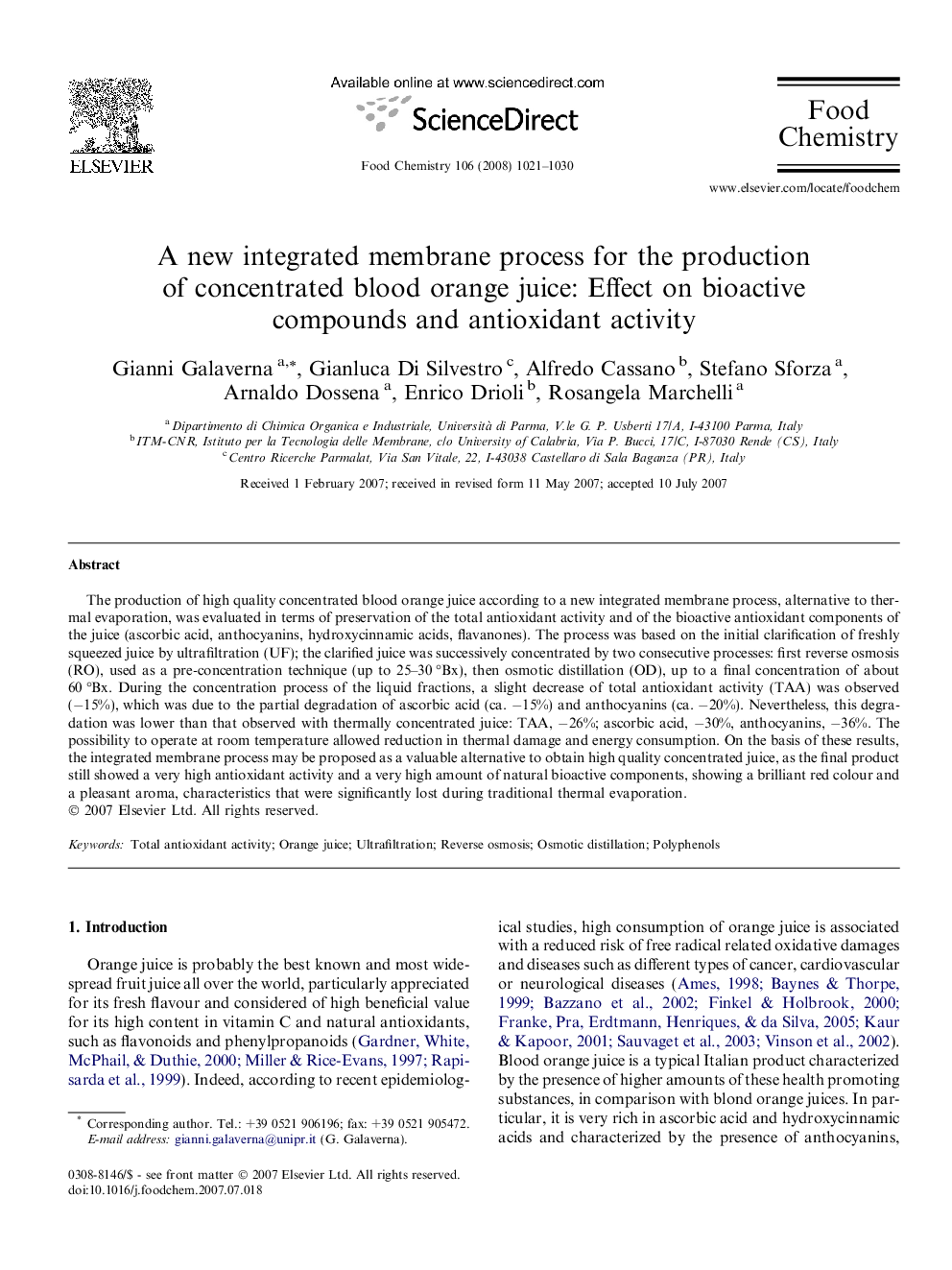| Article ID | Journal | Published Year | Pages | File Type |
|---|---|---|---|---|
| 1189588 | Food Chemistry | 2008 | 10 Pages |
The production of high quality concentrated blood orange juice according to a new integrated membrane process, alternative to thermal evaporation, was evaluated in terms of preservation of the total antioxidant activity and of the bioactive antioxidant components of the juice (ascorbic acid, anthocyanins, hydroxycinnamic acids, flavanones). The process was based on the initial clarification of freshly squeezed juice by ultrafiltration (UF); the clarified juice was successively concentrated by two consecutive processes: first reverse osmosis (RO), used as a pre-concentration technique (up to 25–30 °Bx), then osmotic distillation (OD), up to a final concentration of about 60 °Bx. During the concentration process of the liquid fractions, a slight decrease of total antioxidant activity (TAA) was observed (−15%), which was due to the partial degradation of ascorbic acid (ca. −15%) and anthocyanins (ca. −20%). Nevertheless, this degradation was lower than that observed with thermally concentrated juice: TAA, −26%; ascorbic acid, −30%, anthocyanins, −36%. The possibility to operate at room temperature allowed reduction in thermal damage and energy consumption. On the basis of these results, the integrated membrane process may be proposed as a valuable alternative to obtain high quality concentrated juice, as the final product still showed a very high antioxidant activity and a very high amount of natural bioactive components, showing a brilliant red colour and a pleasant aroma, characteristics that were significantly lost during traditional thermal evaporation.
